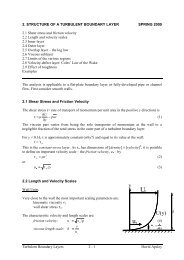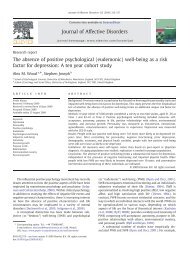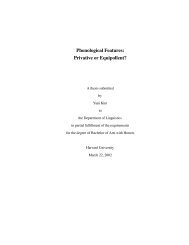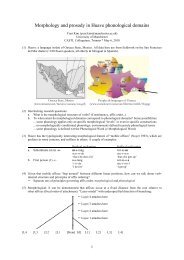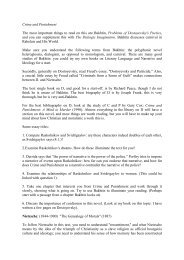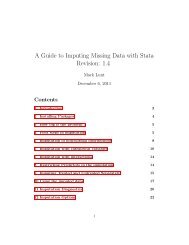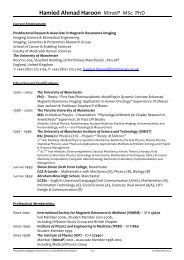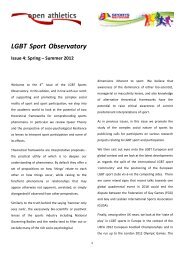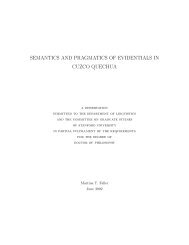Mapping Manchester - University of Manchester
Mapping Manchester - University of Manchester
Mapping Manchester - University of Manchester
Create successful ePaper yourself
Turn your PDF publications into a flip-book with our unique Google optimized e-Paper software.
Population map for Greater<br />
<strong>Manchester</strong><br />
There are around 2.5 million people living in Greater <strong>Manchester</strong>. <strong>Mapping</strong><br />
population distribution is one way to make sense <strong>of</strong> the complex social<br />
geographies <strong>of</strong> the region. In this model detailed census data has been used<br />
to calculate resident population density, which is then mapped as ‘height’.<br />
The taller the area, the more people live there in a greater geographic<br />
concentration. When plotted, the result is a stepped-surface map that can be<br />
drawn in pseudo three-dimensional form. This can be animated by flying a<br />
virtual camera around it.<br />
Colour coding is used to indicate different categories <strong>of</strong> residential population density according to the scale<br />
shown here. Darker reds represent areas with a higher number <strong>of</strong> residents (measured in people per square<br />
hectare). Geographical context is given by the addition <strong>of</strong> motorways and key roads.<br />
The pattern <strong>of</strong> varying residential population density across the region clearly picks out<br />
the core towns and some their sub-centres. The most prominent are Bolton, Oldham<br />
and Stockport. However, the real peaks <strong>of</strong> population are right in the city centre. The<br />
very highest population densities are typically single blocks <strong>of</strong> flats – the ‘tallest’ is a<br />
<strong>University</strong> <strong>of</strong> <strong>Manchester</strong> student hall <strong>of</strong> residence on Granby Row. The flattest areas<br />
have little resident population although this does not mean they are empty or<br />
undeveloped. Many are business areas, industrial sites and retail parks which have a<br />
large daily influx <strong>of</strong> people.<br />
Data preparation and animation production by Karl Hennermann, School <strong>of</strong><br />
Environment and Development, <strong>University</strong> <strong>of</strong> <strong>Manchester</strong>.<br />
(Sources <strong>of</strong> data: 2001 Census, Office for Nation Statistics; Output areas boundaries,<br />
UKBORDERS, http://edina.ac.uk/ukborders/; Ordnance Survey Strategi,<br />
http://edina.ac.uk/digimap/)<br />
30






